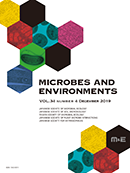Volume 40, Issue 3
Displaying 1-14 of 14 articles from this issue
- |<
- <
- 1
- >
- >|
Regular Paper
-
Article type: Regular Paper
2025Volume 40Issue 3 Article ID: ME25023
Published: 2025
Released on J-STAGE: September 30, 2025
Download PDF (882K) Full view HTML
Short Communication
-
Article type: Short Communication
2025Volume 40Issue 3 Article ID: ME25017
Published: 2025
Released on J-STAGE: September 27, 2025
Download PDF (1139K) Full view HTML
Short Communication
-
Article type: Short Communication
2025Volume 40Issue 3 Article ID: ME25037
Published: 2025
Released on J-STAGE: September 27, 2025
Download PDF (312K) Full view HTML
Regular Paper
-
Article type: Regular Paper
2025Volume 40Issue 3 Article ID: ME24115
Published: 2025
Released on J-STAGE: September 25, 2025
Download PDF (8702K) Full view HTML
Short Communication
-
Article type: Short Communication
2025Volume 40Issue 3 Article ID: ME25030
Published: 2025
Released on J-STAGE: September 18, 2025
Download PDF (299K) Full view HTML
Regular Paper
-
Article type: Regular Paper
2025Volume 40Issue 3 Article ID: ME25036
Published: 2025
Released on J-STAGE: September 10, 2025
Download PDF (2980K) Full view HTML
Regular Paper
-
Article type: Regular Paper
2025Volume 40Issue 3 Article ID: ME25011
Published: 2025
Released on J-STAGE: September 06, 2025
Download PDF (1697K) Full view HTML
Special issue: Cool Earth via Microbes
Minireview
-
Article type: Minireview
2025Volume 40Issue 3 Article ID: ME25027
Published: 2025
Released on J-STAGE: August 23, 2025
Download PDF (1639K) Full view HTML
Short Communication
-
Article type: Short Communication
2025Volume 40Issue 3 Article ID: ME24075
Published: 2025
Released on J-STAGE: August 20, 2025
Download PDF (1167K) Full view HTML
Regular Paper
-
Article type: Regular Paper
2025Volume 40Issue 3 Article ID: ME25019
Published: 2025
Released on J-STAGE: July 23, 2025
Download PDF (4789K) Full view HTML
Regular Paper
-
Article type: Regular Paper
2025Volume 40Issue 3 Article ID: ME24067
Published: 2025
Released on J-STAGE: July 23, 2025
Download PDF (6577K) Full view HTML
Regular Paper
-
Article type: Regular Paper
2025Volume 40Issue 3 Article ID: ME25004
Published: 2025
Released on J-STAGE: July 18, 2025
Download PDF (2790K) Full view HTML
Regular Paper
-
Article type: Regular Paper
2025Volume 40Issue 3 Article ID: ME24104
Published: 2025
Released on J-STAGE: July 12, 2025
Download PDF (1403K) Full view HTML
Regular Paper
-
Article type: Regular Paper
2025Volume 40Issue 3 Article ID: ME24022
Published: 2025
Released on J-STAGE: July 03, 2025
Download PDF (9641K) Full view HTML
- |<
- <
- 1
- >
- >|
